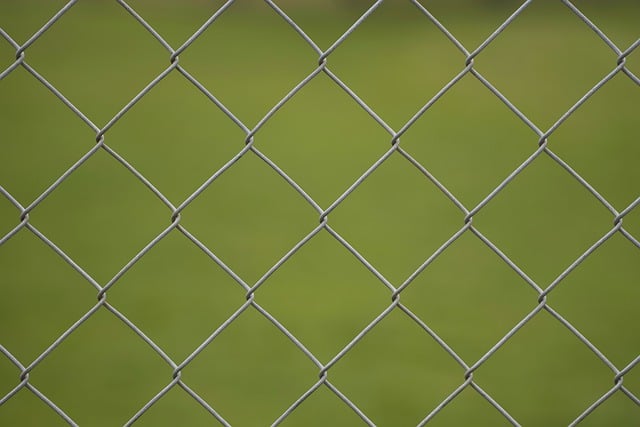“Enhance your New Bedford, MA home’s curb appeal and security with a stylish vinyl fence! This comprehensive guide explores the entire process of installing a vinyl fence, from understanding diverse fence types suitable for local climates to selecting the ideal contractor. We break down the installation process step-by-step, highlight the benefits of vinyl fences in Massachusetts’ unique conditions, offer maintenance tips to ensure longevity, and navigate local regulations and permits. Whether you’re a homeowner seeking a reliable barrier or an investor looking to enhance property value, this article is your go-to resource.”
- Understanding Vinyl Fence Types for New Bedford Homes
- Choosing the Right Contractor: Key Considerations
- The Installation Process: Step-by-Step Guide
- Benefits of Vinyl Fences in Massachusetts Climate
- Maintenance Tips to Keep Your Fence Looking New
- Local Regulations and Permits for Vinyl Fence Installation
Understanding Vinyl Fence Types for New Bedford Homes
When it comes to vinyl fence installation in New Bedford, understanding the various types available is key to making an informed decision. Vinyl fences offer a wide range of styles, colors, and textures, each designed to cater to different aesthetic preferences and functional needs. From traditional picket fences that evoke a sense of classic charm, to more modern, sleek designs featuring clean lines and minimal maintenance, there’s a vinyl option for every taste.
Additionally, these fences come in various configurations such as privacy fences designed to provide maximum seclusion, or post-and-rail fences that offer both visual appeal and a safe barrier. Some even incorporate gates and other accessories to enhance functionality and security. Knowing the options available allows homeowners in New Bedford to choose a vinyl fence that not only complements their property but also meets their specific requirements for privacy, safety, and low maintenance.
Choosing the Right Contractor: Key Considerations
When selecting a vinyl fence installation contractor in New Bedford, MA, it’s crucial to make an informed decision to ensure the project’s success and your satisfaction. Begin by evaluating their experience; look for contractors with a proven track record and expertise in vinyl fencing. Check online reviews and ask for references from previous clients to gauge their professionalism and work quality.
Additionally, consider the contractor’s licensing and insurance status. Ensure they have the necessary permits and are adequately insured to protect you from potential risks or liabilities during installation. Communication is key; choose a contractor who is responsive, transparent, and willing to discuss your project in detail, addressing all your concerns and questions.
The Installation Process: Step-by-Step Guide
When it comes to vinyl fence installation, New Bedford, MA contractors employ a meticulous process to ensure a durable and aesthetically pleasing result. The journey begins with a comprehensive site evaluation, measuring the perimeter and assessing any unique challenges present. This step is crucial for accurate material estimation and planning the layout.
Next, the contractor marks out the fence line, ensuring it aligns perfectly with property boundaries. Post holes are then carefully dug, strategically positioned for maximum stability. The posts are set in place, and a robust foundation is created using concrete. With the posts securely fastened, the contractors proceed to attach panels, utilizing specialized tools to ensure precise fitting. This involves measuring, cutting, and securing each panel, creating a seamless and sturdy fence structure.
Benefits of Vinyl Fences in Massachusetts Climate
Vinyl fences offer numerous advantages for homeowners in New Bedford, MA, particularly when considering the region’s diverse climate. One of its key benefits is durability; vinyl is resistant to rot, rust, and decay, ensuring it stands strong against Massachusetts’ unpredictable weather, from harsh winters to hot summers. This longevity translates into a cost-effective option, as it reduces the need for frequent repairs or replacements.
Additionally, vinyl fences are low maintenance, making them ideal for busy homeowners. They do not require painting or sealing like wooden fences, eliminating the hassle and potential environmental impact of these processes. The material’s flexibility allows it to expand and contract with temperature changes, preventing warping or breaking, and its smooth surface discourages graffiti, keeping your fence looking pristine throughout the year.
Maintenance Tips to Keep Your Fence Looking New
Regular cleaning is key to keeping your vinyl fence looking new. Use a soft-bristled brush or sponge and mild soap to remove any dirt, stains, or mold that may accumulate over time. Avoid using abrasive cleaners or power washers, as they can damage the fence’s surface. Washing your fence during the cooler parts of the day will prevent water spots from forming.
Inspect your vinyl fence regularly for any signs of damage, such as cracks, chips, or warping. Promptly repair any issues to prevent them from escalating. Apply a fresh coat of vinyl fence sealer every few years to protect against UV rays and maintain the fence’s color and gloss. This simple maintenance routine will help extend the life of your fence and keep it looking as good as new.
Local Regulations and Permits for Vinyl Fence Installation
Before beginning any vinyl fence installation, homeowners in New Bedford, MA, should familiarize themselves with local regulations and permitting requirements. These guidelines are put in place to ensure structural safety, maintain neighborhood aesthetics, and protect property values. Each town or city may have specific codes regarding fence height, materials, design, and placement. For instance, some areas might restrict the installation of fences taller than a certain height, while others may have rules about where fences can be constructed relative to property lines.
Obtaining the necessary permits is a crucial step in the process. Homeowners typically need to submit an application to their local building department, providing details about the fence’s design, dimensions, and location. This ensures that the installation complies with building codes and safety standards. Permits may also be required from other departments, such as zoning or planning, depending on the complexity of the project and local regulations. It is essential to check with the relevant authorities in New Bedford to understand the specific requirements and avoid any potential penalties for non-compliance.
